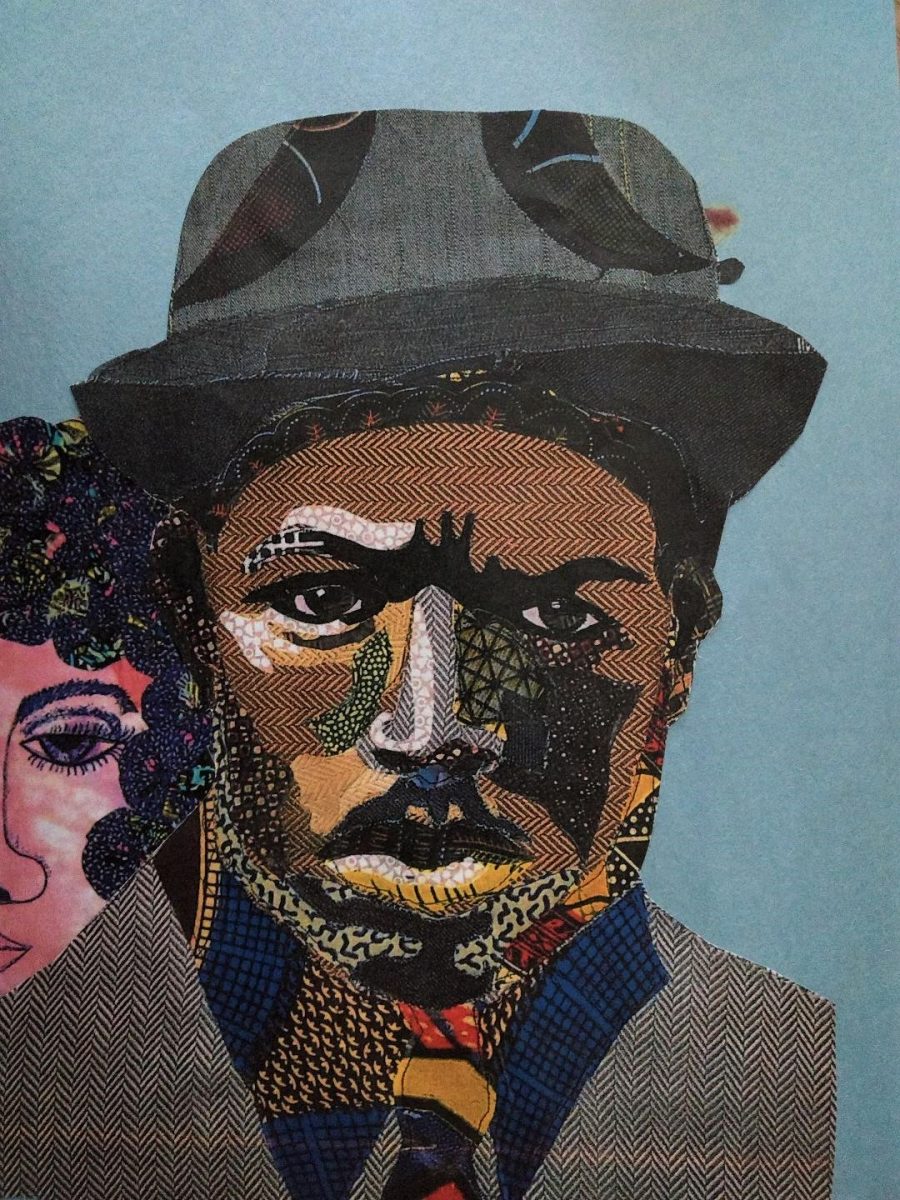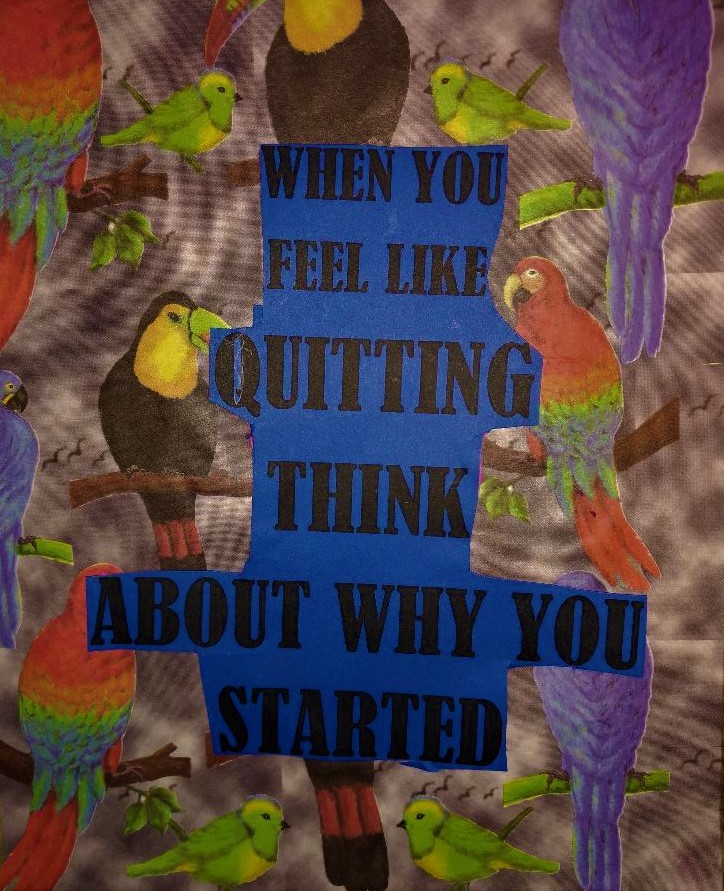Creating New Pathways at Mays Elementary
By Anna Joranger
As another school year kicks off, Urban Gateways is busy planning for our 2019-2020 partnerships – and taking inspiration from fruitful partnerships we’ve already established. In the spirit of newness and reflection, we thought September would be a good moment to dig deep into a partnership that has gained traction over the years, impacting educators, Teaching Artists, students, and the entire community.
Teaching Artist Zahra Baker has been working at Mays Elementary Academy in Chicago’s Englewood community for four school years now, collaborating with music teacher Sharon Mason as part of an Urban Gateways Artist-in-Residence program thanks to a grant through the Creative Schools Fund. Each spring Zahra spends two days a week with three of Sharon’s classes per day, working with a range of grades across a variety of artistic disciplines.
This is a program of depth and breadth. So as Sharon puts it, “You can try and measure the difference, but it may come to fruition years from now.” What she does know is that “These things really do make a difference.” By June of this year, after four years of partnership, some of that change was already beginning to crystalize.
“You can try and measure the difference, but it may come to fruition years from now.”
-Sharon Mason, Mays Elementary Music Teacher

“Quilted Forest.” Mays Elementary 7th grade artwork, 2017-18 school year.
Zahra works in multiple disciplines, and Sharon, while technically the school’s music teacher, is also the school’s sole arts teacher in general. Since she has a background in more than just music, Sharon says that “I can’t just teach them music; they have to be exposed to all kinds of art. Only music would be unfair – they wouldn’t get the benefit of many different [artistic] experiences.”
From family make-and-take days to peer performances, Zahra and Sharon have worked together to build creative community across the school and at multiple grade levels, using visual art, music, poetry, and more. In some instances Zahra has had the opportunity to work with the same group from year to year – such as this year’s graduating 8th grade class; Zahra had been creating alongside them since their 6th grade year. Zahra and Sharon worked with those students over the course of three school years to creatively explore topics from the Great Migration to the Harlem Renaissance, from the protest songs of the 1960s to the students’ South Side neighborhood of today.
“The turning point for me was trying to develop art activities about the 60s and the protest era,” Zahra said. “We found a little resistance. One student said, ‘How come every time we learn about Black history it’s about us being beat down?’ They wanted to talk instead about what’s going well. So [we said] okay, let’s go with that. Let’s make a radio show looking at their neighborhood the way they want people to see it. That was two years ago.”
“One student said, ‘How come every time we learn about Black history it’s about us being beat down?’ They wanted to talk instead about what’s going well.”
-Zahra Baker, Teaching Artist
The “radio show” concept became the focal point of the group’s 6th grade year; Zahra brought in African fabric as a backdrop, and with the addition of a few chairs and mics, the group found themselves with a stage. From poetry and spoken word to drumming and dancing, the “show” gave context to their broader conversation. “I had a separate booth for people to step into and represent people from the neighborhood calling in, saying something good they’d seen about teens in the neighborhood,” Zahra said. “One character kept saying negative stuff, and the host [another student] said, ‘Tell me something good!’ They found things to say that were more than just what’s in the media.” From thereon out, “Tell Me Something Good” became the show’s name.
When the group’s 7th grade year came around and they had another springtime program slot with Zahra, Sharon wanted to engage students who were less enthused about the performance aspect – so they switched their focus to visual arts and positive self-expression. From artworks exploring the connections between superheroes like Black Panther and ancient Egyptian artwork and culture, to “I Am” poems interwoven with visuals, dream catchers to signify goal-setting, and silhouette collages, the group produced huge amounts of artwork over the course of the spring. Sharon submitted their artwork to Chicago’s All-City youth visual arts exhibition, resulting in five students having their work shown there; the students’ art was also featured at the Loyola University Museum of Art as part of an Urban Gateways exhibition highlighting Artist-in-Residence programs. Students also welcomed their families and peers to a walk-through exhibition on the school’s third floor.

“Hidden in Plain View.” Mays Elementary artwork from Urban Gateways’ 2018 exhibition at the Loyola University Museum of Art.
Along with the joy of seeing their work gain visibility, a sad moment for the program also arrived the spring of 2018 when a Mays student who had participated in Zahra’s program passed away, the victim of gun violence (Zahra framed a piece of his artwork, and gave it to his teacher). As the years went by, Sharon, Zahra, and their students were experiencing both hope and pain within their Mays community – with art acting as an anchor throughout.
“Tell Me Something Good” and creative self-expression transitioned the group into their 8th grade year, and in spring 2019 Zahra and Sharon worked with them to focus on community through poetry. Writing reflective poems inspired by Maya Angelou’s “I Know Why the Caged Bird Sings” and more – Zahra published the students’ poetry in this Mays Class of 2019 collection, “To fly and be free” – the students ultimately combined personal stories with community activism by hosting a forum for peers and community members; they read poetry and discussed topics concerning their neighborhood, talking about improvements they want to see. Sarah Karp from WBEZ even came out to experience the forum; she featured a story about the event, along with a brief interview with student Tranise, on air.
“The kids don’t really feel they have a voice in anything,” Sharon said. “It takes a very long time for them to believe that what they say can make a difference. And suddenly someone’s really asking their opinion: What should people know about Englewood?”
“They talked about what people say about black teens, teens in their neighborhood, and they talked about what they wanted people to know,” Zahra said. “That they’re smart, that they’re responsible. I wanted them to feel like the community was holding them.”
If the program continues in spring 2020, Sharon and Zahra hope to keep building on the community forum concept; Zahra has been thinking about welcoming guests such as the alderman into their classroom early in the semester, so that by the time students present their community forum in June, they’ve built up an influential audience. “We can gather their stories, their words of wisdom,” Zahra said. “I’d like to continue the book, publishing the book, and add letters and messages from stakeholders…And [the students] knowing who those people are, that it’s OK to communicate with them, that’s a piece of agency they need. They can cultivate that aspect of themselves as community organizers.”
Tranise, the student interviewed by WBEZ, is off to a good start; during this past June’s forum she stated that she wanted to see a girls’ club at Mays. An attendee contacted Sharon afterward, saying that she ran a women’s group and wanted to help Mays start a group for girls; the new club will be Tranise’s legacy at Mays. “She saw that when you speak out, you can make things happen,” Zahra said. Furthermore, the WBEZ reporter plans to follow Tranise throughout her four years in high school. The footprint of words spoken (or read) aloud within a close community sometimes turns out to be much bigger.
Poetry by Joshua
The free bird thinks of another breeze
A free bird doesn’t think of nothing except flying
I heard adults in my neighborhood say that teens
Don’t take things serious enough the way they should
I heard the news say that teens are unstable
And need to be controlled.
I want people to know that
I am an athlete
I wish to play soccer in professional leagues
I love playing video games and recreation activities
I get mad when people talk about my family
I hope to graduate college
I am an exceptional student
I was born on 31st August 2005
Joshua, in Nigeria
I want to know
The mystery of life.
As Sharon said at the outset, the impact of this kind of program is complex and hard to encapsulate. For one thing, it’s about relationships between artists and educators: “This is a real partnership,” Sharon said. “This is us [Zahra and me] talking all the time, going back and forth, figuring things out. Zahra is going way beyond, she’s thinking about it all the time.”
It’s also about building a supportive and creative environment that students know they can count on: When they see her again for another year, “I think the first thought is, you came back!” Zahra said. “In good times or bad, we’re gonna ride this thing through. I think that plays off as consistency for them, because they have so many people coming and going…”
“…Belonging: We all want that in life. Every year that [the program is] renewed, it’s like a gift,” Zahra said.
And it’s about helping students to feel empowered: “They’re very proud of the work that they do,” Sharon said. “There’s more self-confidence…For the 8th graders, I saw them realize, we DO make a difference. This thing I said actually made a difference. In high school, that’s going to help. Maybe I want to be on student council, or just, I do have a voice. They gain that.”
Maybe the impact is less about metrics, and more about illumination: Creating new pathways forward, pathways that are unique to each young voice.

THANK YOU
…To Zahra & Sharon for their dedication, and to all the incredible staff at Mays; to Ingenuity, Inc. and the Creative Schools Fund for making this program possible; to WBEZ and Sarah Karp for spreading the word about the students’ community forum; and most of all to the young artists themselves.